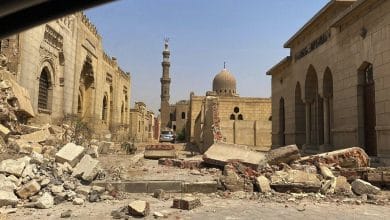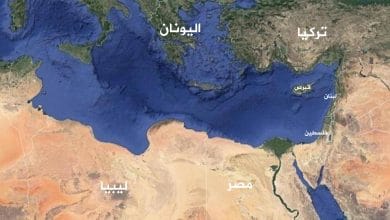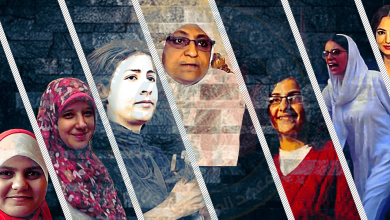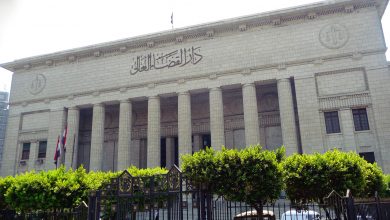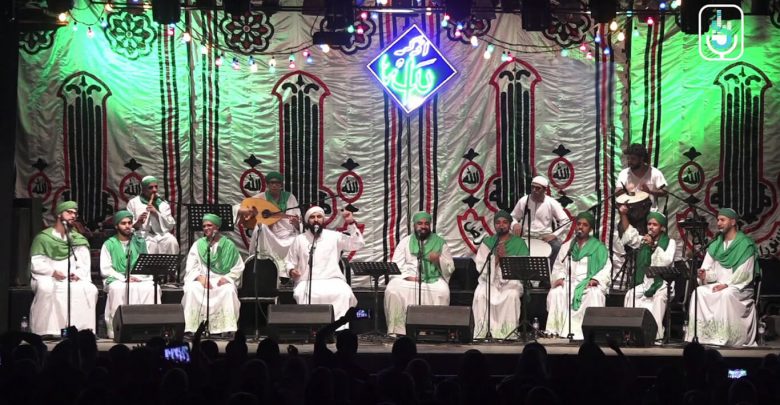
Sufism and Political Islam: a viable replacement? (2)
The first part of this work dealt with the historical manifestations of Sufism in the Muslim world bearing emphasis on the varied roles played by orders and Ulema in the defense of people’s rights, territories and protection of personal/national property. Now I examine power shifts between Sufi orders and post-colonial state authorities in Egypt before and after 2011. I draw upon narratives and observations of the growing youth market supporting and adopting ‘modern Sufism’ as promoted by USA and the United Arab Emirates and examine the prospects of revived mobilization platforms drawing upon Sufis’ essential strife for justice and rights.
Shifting Power Balances
By the end of British occupation, subsequent governments following the 1952 coup have shown great interest in appropriating the Sufi leadership that lied in al-Bakry and al-Sadat families since the end of the nineteenth century. Sufi scholars ‘Ulema’ were structured in state-run institutions such as Al Azhar. Al Ashraf association, the Supreme Council for Sufi Orders and communal Sufi traditions such as Mawalid[1] and Takaya have ever since governed by clear legal and communal rules. Thereof, Heck’s second type of Sufism remained part of history in post-colonial Arab countries, only until the last two decades. A recent example in post-war Iraq is the Sufi jihadism that emerged under “Army of the Men of the Naqshabandi Order”, also known as JRTN, led by Izzat Ibrahim al-Duri who was deputy of ex-president Saddam Hussein. The group promoted a Ba’athist, nationalist, Sunni, Sufi ideology and fostered support among Arab and Kurdish Iraqis. Ex-members of the Iraq’s intelligence, army, and republican guards formed its core while tribal members composed the majority of membership. The group has been renounced for tolerance to all major religious and ethnic groups- Shiites, Sunnis, Sufis, Jews, Christians, etc. It condemned sectarian conflicts and IS’s killing of civilians despite temporal alliance between both, and directed its efforts against coalition forces until 2011, the Maliki government, and Iran’s Kurdish Separatist groups[2]. As jihadi Sufis of the 19th century African continent, the JRTN is not classified as terrorist organization by the USA, the UN, or EU. It follows a resistance thrust against the “unbeliever-occupier” but has shadowed its record by timed alliance with IS before 2011[3].
In most of today’s Muslim communities, Sufi orders share organic relationship with state authorities. However, some checks and balances remain active. Compared to their historical role in socio-political mobilization, defense of rights, which posed them closer to today’s ‘general prosecutor’ position, in post-independence Egypt, Sufi orders traded their ability to spread spiritual beliefs, organize and hold Mawlids, recruit followers, keep their internal regularities and tribal/familial laws and other interests for ultimate obedience to state authorities. This, however, does not translate into all-time harmonious relation with governments. In Mubarak era, unruly presidential decree appointing Abdel-Hadi al-Qasabi as the grand sheikh of Sufi orders in Egypt has raised opposition among Sufi sheikhs because, according to internal rules, the eldest Sheikh, Abul Azayim, was the one deserving this position. Twenty Sheikhs issued a dissent statement in Moulid Al Hussein celebration in 2010 and Abul Azayim, head of the Azamiyya order, formed the International Federation of Sufi Orders and regarded himself the legitimate successor of Grand Sheikh Ahmed Kamel Yasin (d. 2008).
Such negational power comes from a fact that Sufis are divided into 70 officially registered orders branched off major Sufi orders and enjoying support of over 15 million followers. The Supreme council of Sufi orders is entrusted with supervising their activities in Egypt and its grand sheikh is normally appointed by a presidential decree- following traditional laws of internal selection[4]. When overstepped, orders began to think of a more effective political organization. Before 2011 the Azamiya Order hosted a conference on ‘Politics and Sufism’ and suggested the establishment of a political party to represent the Sufi population in Egypt[5]. The revolution rekindled these aspirations to capitalize on its wide-spread reach that forges significant political force especially in times of turmoil. In the period between 2011-2013, orders sought to protect their socio-political position amid the political disorder following the ruin of the 30-year ex-president Mubarak rule. To counter-balance political Islamists’ hegemony, Sufi orders capitalized on sheikh-Murid spiritual relationship Just as the Muslim Brothers and Salafis take hold of members using strict organizational structures. Sufi sheikhs guided murids/disciples’ behavior, political culture, and political choices using their need for absolute submission and compliance to the Sheikh in order to reach spiritual purification. Moreover, the need to defeat existing anti-Sufism tendencies, beckoned in long-standing enmity after Sufis had sided with political authorities in 1952, has peaked with repeated attacks on shrines and traditional ceremonies. Thereof, Sufis from different strands aligned with secular and liberal groups. Al this, however, did not culminate into effective political representation. Inter-Sufi rivalries were reflected in party/alliance choices and divided their electoral weight. For example, Al-Qasabi joined “For the Love of Egypt” parliamentary list in 2011 elections while Abul Azayim supported the “Independent National Awakening Bloc” in the first phase and the “Republican Alliance for Social Forces” in the second[6].
Meanwhile, Sufis political influence was compromised by leaders’ lack of political awareness, poor organization and assimilation in the society’s populist culture that enable a wide spectrum of political affiliations among its followers. In addition, just as Sufis culture harbored a number of positive political values- e.g., tolerance, stability, cooperation, and consolidation- it did serve some submissive values that limit individuals’ autonomous choice- example giving, values of coercion, subjugation, and authoritarianism through the master’s absolute power. All taken together, Sufi leaders may not have a strong chance of winning election themselves, but they can influence political spaces through electoral mobilization, reinforcing societal bases of political parties or, otherwise, delegitimizing present authorities, and communicating political/social dissent[7].
This equilibrium is clear in the case of Egypt’s Ahmad Al-Tayyib, the Grand Sheikh of Al Azhar and head of the Ba’ly order which enjoys massive popular support in upper Egypt, and the General-turned-President Abdul Fattah Al Sisi, whose suggested constitutional amendments allow him to depose the Grand Sheikh of Al Azhar after contentious relationship between both since 2013. As a military leader, Al Sisi’s attempt to impose absolute political subjugation of Al Azhar, to direct the institution’s fatawa and schooling/university curricula, and to constrain its presence in international platforms and outreach, all have been met by fierce and subtle resistance from the Al- Tayyib who only gained his political independence as the Grand Sheikh in 2012. While traditional and institutional constraints hindered his suppression, the Grand Sheikh sought support from the regime’s regional allies, UAE and, later, Mohamed Bin Salman of Saudi Arabia, to moderate the political pressures on Al Azhar’s autonomy. His attempts were eventually successful[8] because this has coincided with Emirate’s decade-long interest in promoting ‘modern Sufism’ as means to delegitimize political Islam and Saudi Arabia’s religious hegemony, following the United States revival of moderate Sufism past 9/11 incidents. The following parts give more insight into the factors playing today’s Sufi discourse.
USA and Modern Sufism
After 9/11, a conference organized by the neo-conservative think-tank Nixon center in Washington DC was held in 2003 and attended by the worldwide Naqshbandi leader Hisham Kabbani and the well-known author Bernard Lewis to promote official alliance between the US government and ‘moderate Sufism”. Likewise, Daniel Pipes has voiced a call to US officials to support moderate Sufism through the Center for the Study of Islam and Democracy (CSID)[9], while Rand organization, known for close ties with US Defense Department, issued a report in the same year, 2003, titled “Civil Democratic Islam: Partners, Resources and Strategies” and called for official US alliance with ‘modern’ Muslim groups and more focus on modern Sufism whose ideas and concepts were provisioned closest to American values of freedom, democracy, and human rights. As the report cautiously matched Sufism to none of the four Muslim groups- fundamentalists, traditionalists, modernists, and secularists, it included Sufism Islam under the ‘modern’ open intellectual interpretations that influence education and culture and should be encouraged in countries with Sufi traditions, e.g., Iraq and Afghanistan, to promote their historical traditions along US foreign policy interests. The report drew upon parallels between the controversial Turkish self-exiled preacher Fethullah Gulen and promotion of diversity, tolerance, and non-violence, showing his model as one of Islamic modernity[10]while, in general, urging the US administration to support the “popularity and acceptance of Sufism” and “create and propagate a model for prosperous, moderate Islam by identifying and actively aiding countries or regions or groups with the appropriate views and publicize their successes” as means to assist promotion of western democratic values[11].
Thereof, Kabbani became a popular figure of international modern Sufism and regular lecturer and preacher in different countries around the Muslim world- Thailand, Indonesia, Malaysia, Uzbekistan, Pakistan, India, Sri Lanka, United Kingdom, Turkey, Spain, and the Sham region. In the following years, the US Institute of Peace[12], the Carnegie Endowment[13], and similar platforms have hosted dozens of works on modern Sufism. A reflective paper on the potential role of Sufism in US policy[14] came out in 2003 as part of the Nixon Center’s International Security Program activities to span theology and history of Sufism and Sufi orders and stipulate the support of Sufism as a cornerstone to the “War on Terrorism” and ‘war of Ideas’ being a third components to the renewed Homeland security policy. The report quoted Wolfowitz that “The ideals of democracy and freedom have been the most powerful engines of change in the last 50 years and should also give us hope for further development in the Muslim world”[15].This has surely predated the rise of political Islam in the aftermath of popular protests known as the ‘Arab Spring’. The conferences ended with several policy recommendation including the urge of US efforts to protect and preserve shrines and manuscripts and create a political space for private organizations to spread modern Sufism which is compatible with the US-sponsored basic secular education[16].
American policy makers and think tanks’ focus on ‘modern Sufism’ was renewed by a second report titled ‘Building Moderate Muslim Networks” that urged the establishment of worldwide organizations to counterfeit the influence of spanning Jihadist networks and the support of the “ majority of moderate and liberal Muslims who have not created worldwide networks”. The report recalled lessons from the Cold War to foster alliance with people committed to free and democratic ideas and promote an active role of the US to level the playing field of moderates while following a ‘roadmap’ for “moderate liberal Muslim networks” following the Smith Richardson Foundation’s view that the US should face the ‘challenges of enhancing international order and advancing US interests and values abroad’. Meanwhile, authors renewed warns against ‘radical and dogmatic’ interpretations of Islam which have been on rise in recent decades using a number of structural, intellectual and organizational factors under a prevalence of authoritarian political structures, where mosques as few avenues for popular expressions have been packed with extremists who enjoy Saudi funding and work through strong worldwide networks enabling them to have an influence that, eventually, stands disproportionate to their few numbers compared to arguably a majority of ‘liberal’ moderate Muslims, who, the report argues, need platforms and immunities against authoritarian regimes targeting their acceptable alternative to extremism (p. xi-xii).
In short, the collective effort of these reports has directed governments of Muslim countries to allow spaces for active modern Sufism and political liberties to the ‘modern liberal Muslims’ who support American democratic and freedom values. Albeit, the stance has transformed dramatically after political Islamists won ballot majorities and assumed power through 2011 uprisings, but for the second part, the urge for global networking and finance of palatable Sufism was pursued by regional partners who shared long-standing enmity to Saudi Arabia’s ‘Wahhabi’ hegemony on the Muslim world.
UAE Sponsoring Modern Sufism
The United Arab Emirates have adopted long-standing policies to promote a ‘Sunni-Sufi-Ashari’ Islamism as opposed to the Saudi sponsored extremist ideology accused of providing safe-haven to 15 of the 19 Al-Qaeda hijackers. But the UAE had to take its part in the ‘War of Terrorism’ because, meanwhile, two of its nationals were involved in the attack. To avail itself of similar accusation Bin Zayed decisively pursued a long-term policy to support scholastic Sufism and promote apolitical, authority-friendly, and non-violent Sufi discourse to counterfeit Jihadism, at first, and political Islamists- the Muslim Brotherhood- after 2011.
In a thorough study, Amasha organized the Emirate’s policy in five stages: (1) incubation: since 2002, Emirates has been calling Sufi scholars from Egypt, Syria, Mauritania, Jordan, and Yemen for lectures and competitions, e.g., ‘Annual Burda’ leading to (2) institutionalization, represented in ‘Taba’ institute formed in 2005 to organize, among other activities, ‘Inter-Faith Harmony’ competition and establish ‘Kalema Sawa’’ initiative. Taken together, (3) a coherent discourse has matured by 2009 to reflect Emirate’s regional and ideological interests, while aligned with the US post 9/11 strategies, which revolved around three main angles: anti-terrorism (represented in Jihadism and Salafism), friendly relation with authoritarian regimes, and a unified reference to Al Azhar Sunni Sufist religious authority. Al Azhar Grand Sheikh, President of Al Azhar University and Egypt’s Mufti, Sheikh Ali Juma’a became frequent visitors to Abu Dhabi to promote these ideas. This, however, caused Al Azhar officials some troubles. In 2016, the decades-long Saudi-Emirates rivalry led the Taba Institution to exclude Salafism and the Wahhabi ideology from the definition of moderate Sunni Islam in a conference organized in Chechnya and titled ‘Who is Ahli-Sunnah and Jama’ah’. The attendants included Al Azhar Grand Sheikh and other officials who later strived abate the Saudis’ anger. In a separate move, the Grand Sheikh announced Salafism as part of Ahli-Sunnah in a later conversation with CNN Arabic, however, eventually, the Emirates- sponsored discourse was highly (4) politicized against Saudi Arabia’s proclaimed supremacy and the Muslim Brotherhood which Emirates strives to include into the international definition of terrorist organizations. Along these lines, the discourse was shifting from communicating Sufi principles to middle-class audience into a discussion of political/social drawbacks of political Islamism, leading in 2013 to (5) absolute demonization of the MB being synonym to terror and jihadism[17] and pursuing this discourse through various platforms- Taba Institution, the ‘Forum for Promoting Peace in Muslim Societies’ that hosted 700 Sufi scholars to discuss world peace and harmony and promote a moderate vision of Islam, the ‘Muslim Council of Elders’, ‘Mominoun Without Borders”, in addition to training programs- e.g., in 2017, the UAE offered training to 240 Yemeni Imams to counterfeit the ‘Wahhabi extremism’; the program was supervised by the renounced Sufi preacher Al Jafri and news reported the Yemeni Awqaf minister positing this under the “Arab Alliance Against Terrorism”.
Modern Sufism…Authenticity and Youth Religious- political Affiliations
In its current form, modern Sufism serves a decent compromise between a set of conflicting interests; it enables Emirate’s influence on Egypt’s religious discourse, long directed by Wahhabi ‘Salafi’ ideologues while meeting US foreign policy targets and Al Azhar’s strife for marginal political autonomy. However, in its current form contradicts long-standing moral and cultural characteristics of Egyptian and Arab communities. It fails the first democratic experience for Arabs in modern history, it supports lethal despotic regimes, promotes Israel’s regional hegemony and interests, gives up the Palestinian cause that formed national and Islamic conscience of many generations and has been central to Islamic activism for decades, distorts Arab identity and the cause of liberation from US/Zionist hegemony, supports a blood-fisted regime in Syria that caused the greatest humanitarian catastrophe in modern history, flips eyes on the humanitarian catastrophe in Yemen- launched by Arab regimes that maintain a protracted conflict by sending armaments to conflicting end-users in Yemen[18], supports further suppression of freedom and human rights, justifies and even Islamizes IMF’s impoverishment policies, the coercive take-over of national resources, the depletion of national wealth and indulging the nations in onerous debts that only serve armament policies and financial interests of military/royal political/business elites. In short, it mortgages the future of Arab Muslim nations through ultimate support to authoritarianism. It is a value-free Sufism that deepens the distance between individuals and the socio-political environment.
In history and present, a fundamental characteristic of Sufism is the development of socio-political mobilization structures and use of spiritual and physical manifestations of Jihad in the past, against colonial powers, and in the present, against authoritarian regimes. In general, spirituality is central in Muslim and non-Muslim cultures serving the interests of the vulnerable and the defenseless by bringing justice from heavens to earth. Whether for national liberation, for fair political representation, for sectarian and/or Jihadist conflicts, or for inter-faith dialogue, Sufism has a multifaceted and hybrid nature making it even difficult to stipulate one form as “the” sole representative of acceptable Muslim-hood compared to Jihadism/political activism of the Muslim-brotherhood, especially if this promoted form collides with massive state-violence against civilians.
The USA/UAE- sponsored discourse contributes to undermining Sufi orders’ relationship with its own societal bases. It frustrates youthful pursuit of justice and fosters individualized atheistic experience of Islam. This is triggered by a fact that Egypt’s youth has, meanwhile, lost faith in many established institutions that represented Islam for decades- the Muslim Brotherhood, the Salafis, and now AL Azhar Institution. With all public activity spaces locked or heavily censored by military intelligence and state security authorities, Sufism harbored millennials’ religious activities for the last five years and deepened their alienation and negligence of socio-political struggles[19]. Many analysts believe political activism has decisively died in last day of Rabi’a sit-in, 14th August 2013, when army and security forces collaborated into a mass massacre of over 1,000 MB supporters in an open-air bloodbath in two central squares of Cairo. Since then, the Islamic space was dominated by Jihadist organizations, IS and terrorist groups in Sinai; the MB political and socio-economic, even intellectual, presence was eliminated; quietist Salafism have arranged their deal with the regime but lost influence in the street; and the youth of a nation, closely etched to Islamism, has been lost in a five-year time gap.
It is here where Emirates and USA-sponsored Sufism sells out as a youth phenomenon with strong financial backing and relative tolerance from the otherwise blood-thrust authoritarian dictatorship[20]. Young millennials resorted to a number of Sufi scholastic institutions, e.g., Dar El Imad (2012-2015) and Sheikh Al Amoud, where they receive education in Jurisprudence, theology, hadith and other Islamic sciences, learn Sufi teachings, and join collective Zhikr and Mawlid activities in headquarters and Shrines. A four-year participant involvement in these two institutions attests that a growing number of young Egyptians find refuge in Sufi teachings and traditions that accommodate their anger towards Salafi and Brotherhood communities. Anger appears in almost collective self-relief from Shrai’a rulings and a greater thrust to learn and defy ‘islamization’ traditions- Hijab, prayers, etc. In these institutions, greater socio-political alienation accompanies individualized “religiosity” and request for knowledge to quit dependence on religious authorities, sheikhs and preachers, and justify youth defiance- thus meeting political and intellectual interests of ‘modern Sufism’ discourse.
Nevertheless, this phenomenal increase in Sufis popularity fails the youth grieve, their aspiration for justice, political and civil freedom, social-political mobility, and for fair economic policies that allow them to prosper and accumulate savings earlier generations did. In almost all media appearances, Al Jafry avoids speaking critically about Arab regimes and governments, turns back to economic grieves and focus discussions on scholastic issues while delivering diplomatic or no answers to questions dealing with justice and civil freedoms, safety, forced disappearance, human rights, etc. Consequently, a two-sided effect on Modern Sufis’ power base occurs. It strengthens an apathetic drive towards day-to-day and long-term fights for free and safe livelihood, thus putting more weight into spiritual dogmatism, while fostering an atheistic tendency given that all religious sects and colors in Egypt have turned their back to justice.
Meanwhile, sponsoring Modern Sufism as “the” Islam of peace, love, tolerance, progression, the form approved and blessed by western and regional powers, the apolitical spiritual bonding that has little or nothing to do with human rights or Shari’a rule, at least, is simultaneously a cause to sectarian violence. If not against western power or national regimes, it triggers Jihadi assaults on Sufi shrines and collective traditions. In Pakistan, the course of events following state support of the Barelwis[21] to counterfeit Pakistan’s ‘Talibanization” has intensified sectarian divisions and offenses on Sufi places of worship simply because authoritarian appropriation of a certain mode of Islamism, promotion of ‘state Sufism” has left Sufis vulnerable to attack, discursively among the public, and effectively by radical militants. The same result is evident in Sinai where radical gunmen killed 235 praying Muslims in a mosque headed by a Sufi tribal leader in Bir al-Abed[22].Therefore, some analysts conclude that empowering and legitimizing one form of Islamism in a heightened sectarian/politicized environment may lead to further radicalization[23] and undermine Sufism as a constituent aspect of Islamism.
Conclusions
This paper (in its two parts) has presented a critical review of “modern Sufism” in its international and Arab branding giving more weight to the discursive and historical dilemmas underlying the concept, highlighting the role of Sufism as mobilization, representation, and dissent platform throughout Muslim history, its modern manifestations, power balances, and consequences of promoting one sect as ‘the’ ‘good’ Muslim-hood, particularly among youth. As a spiritual experience, Sufi teachings have close contact to ideas of peace, love, tolerance and human rights which are also shared by non-Sufi segments of the Muslim faith, because Islam has a long history of movements supporting peace and non-violence[24]. The bonding with authoritarian regimes and western forces shadows Sufism’s present manifestation and is counterproductive on societal and intellectual levels. The paper suggests that Sufi teachings should be revived and promoted by social forces and Islamic organization to represent popular grieve, mobilize spiritual sentiment to support just causes while giving way to youth aspirations for prosperous, free and just livelihood.
footnotes
[1] Annual celeberation of the Prophet Mohammed (PBUH), hs family members, and Sufi leaders’ birthdays.
[2] Ali, Rafid Fadhil. 2015, “Sufi Insurgent Groups in Iraq.” Terrorism Monitor Volume: 6 (2). The Jamestown Foundation, accessed via: link
[3] Learn more about this group via their official website: https://www.alnakshabandia.net/army/ and more information on Stanford University (2015) “Mapping Militant Organization”, Stanford University, URL: link
[4] Abou Zeid, Haytham, n.d., “Al-Jaafari Mosque:Egypt’s Sufi orders” Al Ahram Weekly, URL: link
[5] Ibid.
[6] See Ladjal, Tarek and Bensaid, Benaouda, (2014) “Sufism and Politics of Contemporary Egypt: A study of Sufi Political Engagement in the Pre and Post-revolutionary Reality of January 2011. Journal of Asian and African Studies pp.1-19.
[7] Ibid, p. 12.
[8] Emirates’ Mohamed Bin Zayed and Egypt’s ex-president Adly Mansour played crucial role in devising a compromise between Al Tayyib and Sisi authorities by which AL Tayyib was to remove two of his strongest calibers in Al Azhar’s institute in return of removing his deposal provision in the suggest amendments. See, Soliman, Asmahan, 25/02/2019, “How Sheikh Al Azhar has Survived the Constitutional Amendments” Mada Masr, URL: link
Also see recent constraints on Al Azhar’s Tayyib international outreach and limitations of media coverage of his movements in: Mostafa, Randa, 20/01/2019 “Travel by presidential Decree: Are there Limits to Sisi Authorities” Mada Masr, URL: link
[9] See a complete report on this issue by anonymous author “Abu Dhabi’s Network Of Political Sufism And Its Implications On The Security Of Saudi Arabia” published by a currently defunct Saudi think tank sponsored by then-Crown Prince Muhammad Bin Nayef and accessible via: link
[10] Benard, Cheryl, 2003, “Civil Democratic Islam Partners, Resources, and Strategies” Rand Organization. P.38. URL: link
[11] Rabasa, Angel, Benard, Cheryl, Schwarts, H, Lowell, Sickle, Peter, 2007 “Building Moderate Muslim Networks” Rand Organization, p.62-3. URL: link
[12] See for example Qamar-ul Huda article “Islamic Reform Relating to Conflict and Peace” USIP, published 12/10/2006 on: https://www.usip.org/publications/2006/10/islamic-reform-relating-conflict-and-peace
[13] Example, Brown, Jonathan ;Salafis and Sufis in Egypt’ Carnegie Endowment for International Peace, published 20/12/2011 on: https://carnegieendowment.org/2011/12/20/salafis-and-sufis-in-egypt-pub-46278
[14] Baran, Zeyno “Understanding Sufism and its Potential Role in US Policy” Nixon Center Conference Report March 2004, accessed through: link
[15] Ibid, p. 23.
[16] Ibid, p.25
[17] A thorough review of development and maturation of UAE=sponsored Sufism is available by Mohamed Amasha, “Emirates and Sufism in Egypt: Mapping thought and Practice” EIPSS, 18/10/2018, URL: link accessed in 23/01/2018.
[18] See Abou ElGheit Report on the use of armaments by third parties in Yemen المستخدم الأخير
[19] El Beih, Yasmin, 11/07/2018, “Egypt’s Millennials Turn to Sufism” Al Monitor. URL: link
[20] See Meier, Christian, “Sufis, Sheikhs and Charlatans” Qantara, n.d. URL: link accessed 24/01/2019.
[21] A movement formed in the 19th century to counterbalance the rise of conservative reformers such as the Deobandis. For more information refer to Ahmed, Ishtiaq, 2011, “The Politics of Religion in South and Southeast Asia”, Routledge, USA.
[22] See details in BBC News, 24/11/2017, “Egypt attack: Gunmen Kill 235 in Sinai mosque”, URL: link
[23] Philippon, Alix, 13/12/2018,“Positive Branding and Soft Power: the Promotion of Sufism in the War on Terror” Brookings Institution URL: link
El-Sherif, Farah, 15/12/2018, “The Problem of political Sufism” Maydan. URL: link
[24] Abu Nimer, Mohammed (2003), Nonviolence and Peacebuilding in Islam: theory and practice. University Press of Florida, USA. Cited in Muedini, Fait, (2015), “Sufism and Anti—colonial Violent Resistance Movements: The Qadiriyya and Sanussi Orders in Algeria and Libya” Open Theology 2015 (1) pp: 134-145. DOI:10.515./opth-2015-0003.
